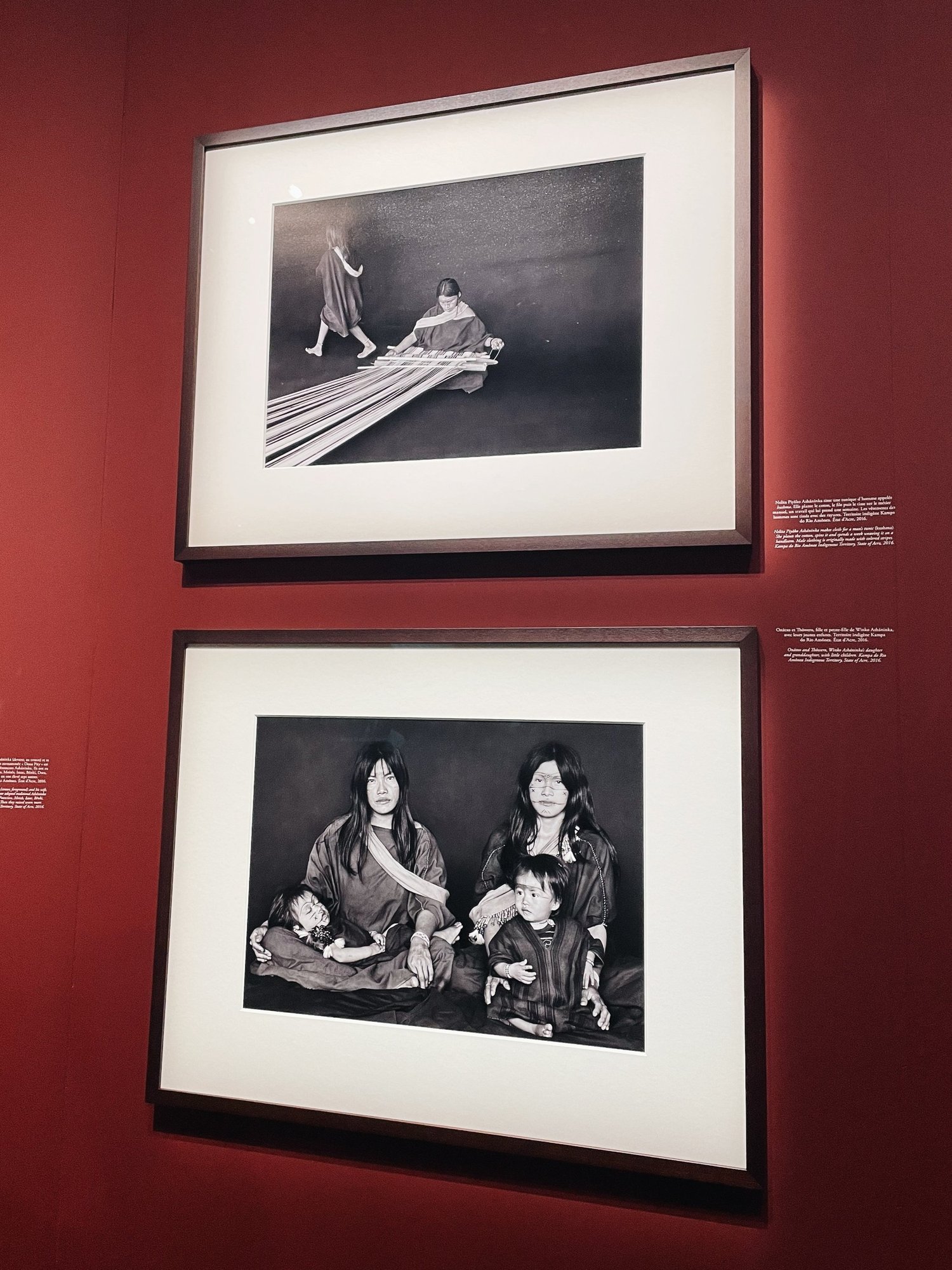Paris Exhibitions: A Few Brief Reviews
This summer can be considered the museum re-emergence era. Almost all institutions, galleries, and art spaces are open to the public (with health protocols still in place), and programming seems to be back on a steady schedule. This summer was a busy one, with the completion of my Master’s degree, travel, and life in general—but I still made time to see a few art exhibitions. And I happened upon some gems this summer. Here are some highlights:
Salgado Amazônia, Philharmonie de Paris
This photographic exhibition at the Philharmonie de Paris was truly an immersive experience, comprising a dark gallery space with black-and-white photos hanging seemingly in thin air and backlit with precise spotlighting. The images on display were from photographer Sebastião Salgado, who spent seven years in the depths of the Amazon rainforest. During his time there, he documented people and landscapes ranging from images of everyday life to photos of ritualistic ceremonies.
The mise-en-scène took these powerful images to the next level. The hanging photos were scattered across the room, and visitors had to navigate in and around them as if they were traveling through an actual forest. Intimate portraiture appeared in and around circular structures which could be entered, reminiscent of a hut-like construction or a domestic space. The exhibition also featured original music by Jean-Michel Jarre, who interpreted sounds of the rainforest through contemporary electronic melodies.
Salgado’s images of rivers and mountains play with texture in such a way they sometimes become abstract images. I particularly loved the manner in which he used reflection to convey the inherent beauty and sublimity of nature.
Salgado photographed ten different ethnic groups of the Amazon, displaying the diverse and distinct cultures among the forest’s inhabitants. The evocation of his work is particularly pertinent considering the environmental and political threats faced by many of these indigenous tribes to this day. The exhibition ultimately reminded us of the importance of preservation, for humanity’s sake.
Women in Abstraction , centre Pompidou
Sonia Delaunay
This exhibition [French title: Elles font l’abstraction] at the Centre Pompidou aimed to reexamine art history by highlighting an oft-forgotten demographic of modern artists: women. Whether considering geometric minimalism or dynamic expressionism, abstraction is often credited to the masculine avant-garde. However, women made significant contributions to this art movement, and this exhibition displays exactly when and how.
Hilma af Klint
Lyubov Popova
The exhibition is organized in a similar fashion as the Centre Pompidou’s permanent collection. The wall texts explain the development of art movements as well as information about each artists’ creative practice. There was an abundance of textiles in this show, eschewing hierarchies between high and low art. Dance and movement were also featured as prominent themes.
Senior Artists of the APY Lands
Vera Pagava
Joan Mitchell
I specifically enjoyed the gallery displaying the works of Brazilian constructivists. Though the sheer amount of artworks made the show a rather dense walkthrough, I generally appreciated the range of works on display as well as the formal focus on the art. The primary objective of Women in Abstraction is to show the importance of recontextualizing our visual history.
Lygia Pape
Berenice Abbott
Henri Cartier-Bresson, Bibliothèque Nationale de France
After a long and acclaimed career, the prolific photographer Henri Cartier-Bresson created his Master Collection, six sets of 385 silver gelatin prints of what he considered to be his most quintessential work. This exhibition, titled Le Grand Jeu, interprets this collection in a way that honors both Cartier-Bresson and the art of curation.
The exhibition is actually five sepreate shows: five guest curators (collector François Pinault, photographer Annie Leibovitz, writer Javier Cercas, film director Wim Wenders, and BNF heritage curator Sylvie Aubenas) were given creative liberty to present fifty Cartier-Bresson Master Collection works of their choice, with no restrictions on theme, chronology, or display.
This of course resulted in five distinct point of views on the photographer’s career. Some photographs appeared each reiteration, others were never featured at all. The navigation, wall texts, and thematic emphasis were unique to each curator. I especially enjoyed Wim Wenders’s emphasis on the still versus the moving image. Each of the five installations presented particular aspects of the photographer’s vision. Nonetheless, the focus remained on Cartier-Bresson’s imagery. In their own way, each gallery showed his ability to capture the essence of famous and anonymous subjects, highlight the eloquence of architecture and landscapes, and reveal the poetry of the quotidian.






























